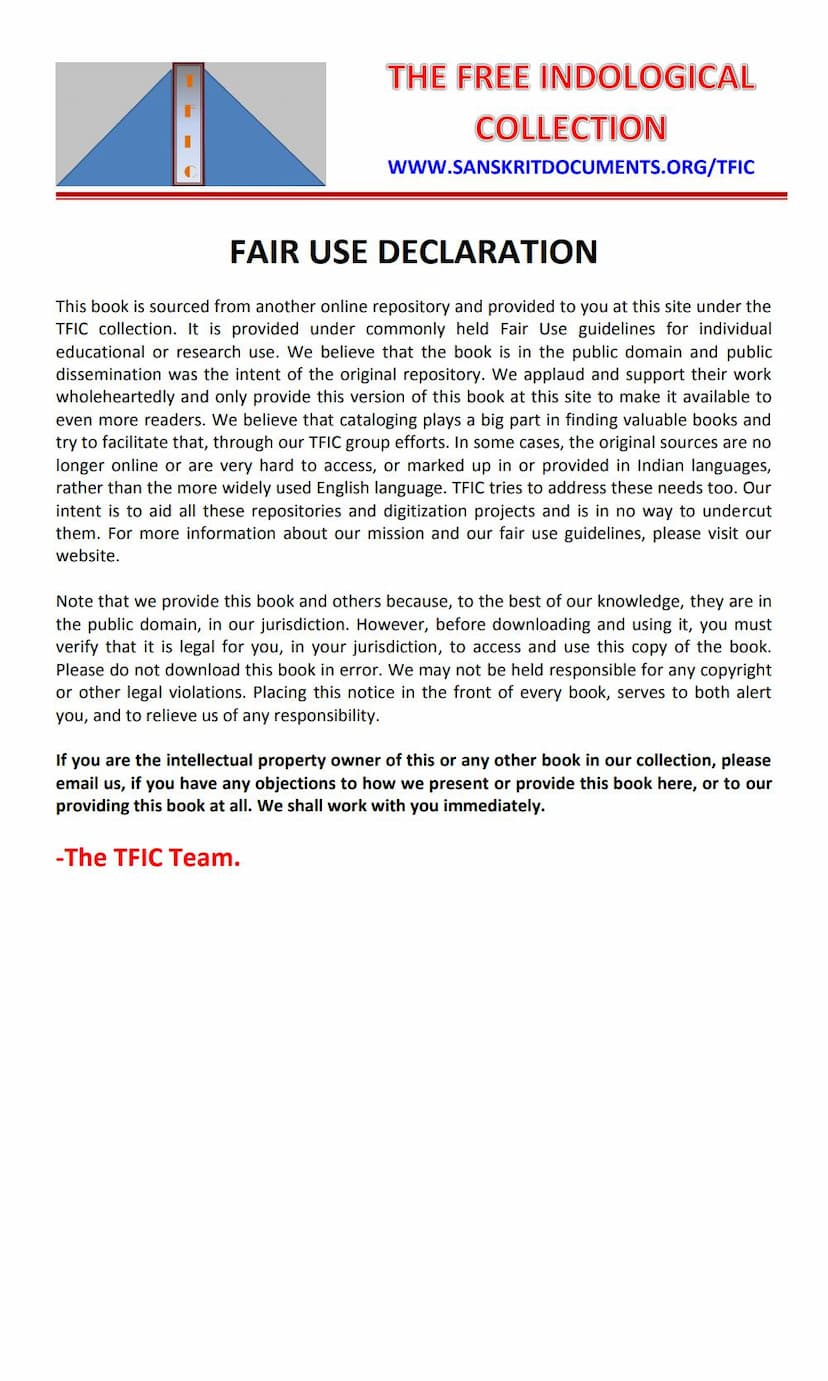Jain Nyaya Ka Vikas
Added to library: September 2, 2025

Summary
This comprehensive summary of "Jain Nyaya ka Vikas" by Nathmalmuni aims to capture the essence of its content, covering the development of Jain logic, its core principles, and its historical evolution.
Jain Nyaya ka Vikas (The Development of Jain Logic)
This book, authored by Muni Nathmal and published by the Jain Vidya Anushilan Kendra, Rajasthan University, Jaipur, is a significant work exploring the evolution and intricacies of Jain logic, particularly focusing on its epistemological framework (Pramana) and dialectical methods (Naya and Syadvada). It was released on the occasion of the 2500th Nirvana centenary of Lord Mahavir.
Key Themes and Concepts:
The book delves into the foundational principles of Jain philosophy and logic, presenting them in a systematic and accessible manner. The core of Jain logic, Syadvada, and its inherent principle of Anekanta (multi-faceted reality) are central to the discussion. The author, Muni Nathmal, skillfully explains how these principles differentiate Jain thought from other Indian philosophical schools.
Structure and Content Overview:
The book is structured to provide a historical and philosophical overview of Jain Nyaya. It covers the following major areas:
1. Historical Development of Jain Nyaya:
- Agam Yug (Scriptural Era): This section likely discusses the early discussions on knowledge (Jnana) and knowables (Jneya) found in the Agamas, emphasizing the primacy of direct, intuitive knowledge.
- Darshan Yug (Philosophical Era): This period marks the engagement of Jain philosophers with Buddhist and Brahmanical logicians, leading to the refinement of Jain logical tools through debate and critique. The development from the initial seeds sown by Sumantabhadra and Siddhasena to the elaborate systems developed by Akalanka, Vidyānanda, and Prabhāchandra is highlighted.
- Pramana Vyavastha Yug (Epistemology Era): This era focuses on the systematic development and codification of the Jain theory of knowledge (Pramana), which gained prominence to counter the logical arguments of other schools.
2. Core Principles of Jain Logic:
- Pramana (Means of Valid Knowledge): The book elaborates on the Jain understanding of valid knowledge, which primarily includes Mati-Shruta (sensory and scriptural knowledge) as Paroksha (indirect) and Avadhi, Manahparyaya, and Kevala Jnana (clairvoyance, telepathy, and omniscience) as Pratyaksha (direct). The debate surrounding the number and types of Pramanas in different Indian philosophical traditions is discussed, with Jainism accepting two primary Pramanas: Pratyaksha and Paroksha.
- Anekanta-Vada (Non-absolutism/Multi-perspectivism): This is the cornerstone of Jain logic. The book explains how Anekanta posits that reality is multi-dimensional and can be viewed from various perspectives. No single perspective can capture the entirety of reality. The author illustrates this through the concept of Nayas (standpoints) and the fundamental interdependence of concepts like generality and particularity, permanence and impermanence, existence and non-existence.
- Syadvada (Conditional Predication): The book explains Syadvada as the logical expression of Anekanta. It clarifies how the term 'Syat' ('perhaps' or 'in some way') is used to qualify statements, acknowledging that every predication is true only from a particular perspective and within specific conditions.
- Saptabhangi Nyaya (Seven-Valued Logic): This is a practical application of Syadvada, presenting seven possible ways of predicating about an object, encompassing affirmation, negation, and indeterminate states. The book likely explores the nuances and potential pitfalls of this dialectical method.
3. Key Concepts Explained:
- Jnana (Knowledge): The nature, source, and limitations of knowledge are discussed, distinguishing between sensory and extrasensory knowledge.
- Pramana-Vyavastha: The book details the classification of Pramanas and their relationship with Prameya (objects of knowledge). It explains how the understanding of reality (Prameya) is dependent on the means of knowing it (Pramana).
- Naya (Standpoints): The author clarifies the various Nayas, such as Sangraha (generality), Vyavahara (convention), Rjuśutra (momentary), Shabda, Samabhirudha, and Evambhuta, and how they offer different perspectives on reality.
- Nichepa: The concept of Nichepa (classification or context) is explained as a method to resolve semantic ambiguity and understand the intended meaning of words and concepts.
- Tark (Logic/Reasoning): The role of logic in inferring unknown realities from known ones is discussed, along with the crucial concept of Avinashbhava (invariable concomitance or Vyapti) as the basis of inference. The book likely analyzes the Jain critique of the Buddhist concept of 'Hetu' (reason) and its development of a refined theory of inference.
- Syadvada and its relation to scientific concepts: The book might touch upon how Syadvada, with its emphasis on relativity and manifold perspectives, resonates with modern scientific concepts like probability and the interconnectedness of phenomena.
Author's Approach:
Muni Nathmal is known for his scholarly yet accessible approach. In his lectures, he is credited with presenting the subtle and complex principles of Jain Nyaya in a clear and profound manner. The book reflects his deep scholarship, intellectual rigor, and his ability to convey profound philosophical ideas with clarity and elegance.
Significance:
"Jain Nyaya ka Vikas" serves as an invaluable resource for students, scholars, and anyone interested in understanding the sophisticated logical and epistemological framework of Jainism. It not only explains the core tenets of Jain Nyaya but also traces its historical development and its contribution to the broader landscape of Indian philosophy. The book likely provides a balanced perspective, acknowledging the contributions of other schools of thought while clearly articulating the unique insights of the Jain tradition.
This summary is based on the title, author, publisher, and the detailed table of contents provided, which outlines the comprehensive nature of the book's exploration of Jain logical development.